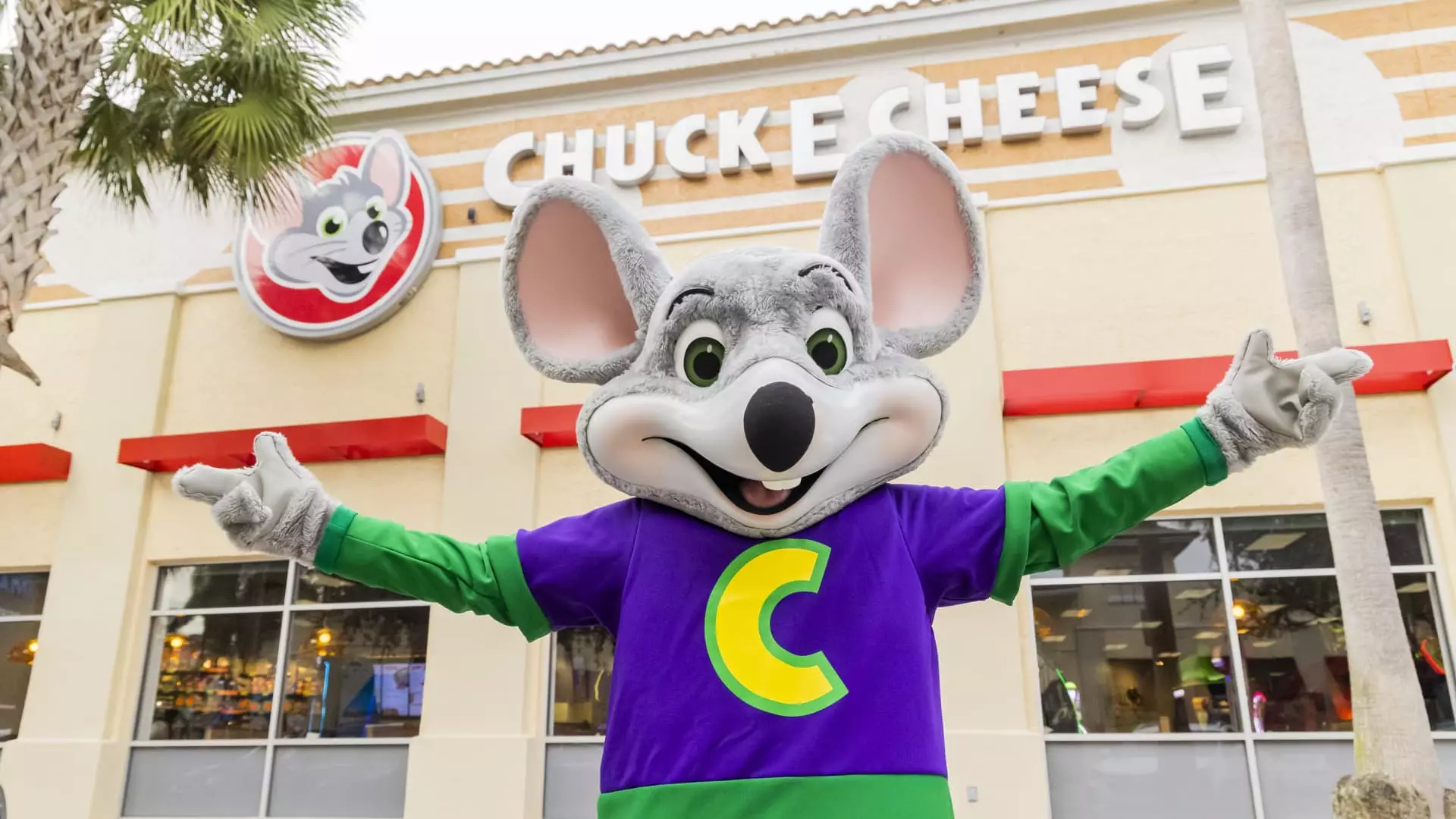After filing for Chapter 11 bankruptcy in June 2020, a time when the world grappled with unprecedented challenges, Chuck E. Cheese has embarked on an ambitious journey towards revival. This iconic brand, synonymous with children’s entertainment for decades, has gone through significant transformations under the leadership of CEO Dave McKillips. Having shed approximately $705 million in debt, Chuck E. Cheese is not only back but evolving to attract a new generation of customers. This resurgence comes amidst a profound shift in how children engage with entertainment, as the ubiquity of smartphones and tablets reshapes their play experiences.
The strategic overhaul of Chuck E. Cheese has been extensive. With an investment of over $300 million, the company has implemented new operational tactics and a dramatic redesign of its physical spaces. This reinvention aims to align the brand with contemporary entertainment preferences while still appealing to nostalgia. As rebellious as it seems to the traditionalists, the decision to remove animatronics and replace them with active entertainment options, like trampolines and interactive technology, symbolizes a pivotal shift in the brand’s philosophy.
Emerging from bankruptcy has positioned Chuck E. Cheese to pivot from a state of financial struggle to a realm of possibilities. According to CEO McKillips, the restaurant’s annual revenue has surged from $912 million in 2019 to an impressive $1.2 billion in 2023. Even though this growth has been achieved with a decrease in physical locations—from 537 U.S. stores in 2019 to 470 today—the successful pivot indicates a strong recovery strategy.
The company’s recent financial disclosures underscore a sustained growth trajectory, marking eight consecutive months of same-store sales growth. Increased consumer interest is evident, yet Chuck E. Cheese still faces headwinds typical of the restaurant industry: rising costs and changing dining habits. Herein lies the challenge of not just attracting diners but of rekindling the magic that first drew families to the brand.
One of the most significant shifts has been the reimagining of the environment within Chuck E. Cheese venues. By replacing outdated features, such as the animatronic band, with modern attractions like trampolines and large digital screens, the brand has sought to become more relevant. McKillips emphasized this change, noting that children’s entertainment consumption patterns have transformed, necessitating an overhaul of traditional offerings.
Moreover, the branding strategy has been notably revamped. Partnerships with popular kids‘ brands including Marvel and Kidz Bop serve not only to modernize the gameplay experience but also to solidify Chuck E. Cheese’s standing within the competitive family entertainment category. These partnerships tap into current cultural trends and allow the venue to resonate with younger audiences, renewing interest and fostering loyalty.
As families increasingly seek value in their entertainment choices, Chuck E. Cheese has adapted to meet their needs. A key component of this strategy involved launching a tiered subscription model, offering perks like unlimited visits and discounts on food and games—a compelling incentive for frequent family outings. The uptake of this initiative has been promising, with nearly 400,000 passes sold in a recent period compared to 79,000 the previous year, demonstrating a significant shift in consumer behavior towards value-oriented spending.
In a climate where family entertainment venues face steep competition from both traditional outlets and novel activities like trampoline parks, establishing a strong value proposition becomes crucial. The membership program, starting at an affordable price point, allows families to conveniently access entertainment while also bolstering Chuck E. Cheese’s revenues through increased footfall.
Reflecting on the brand’s potential, McKillips envisions a future where Chuck E. Cheese plays a significant role beyond just being a restaurant. With 30 licensing deals in various sectors—from food products to clothing—and plans for potential entertainment partnerships, the brand’s mascot has the possibility of becoming a household name. Furthermore, ambitious ideas, including the creation of a feature film or a game show, reveal McKillips’ aspiration to solidify Chuck E. Cheese as not just a restaurant but a cultural icon.
As the company continues to navigate the evolving landscape of family entertainment, the emphasis on innovation, value, and branding positions Chuck E. Cheese to reclaim its place as a beloved destination for children and families alike. The revitalized approach serves as a beacon of hope for nostalgic adults and adventurous children, promising memorable experiences that are both modern and rooted in the essence of what made the brand a staple in the first place.

